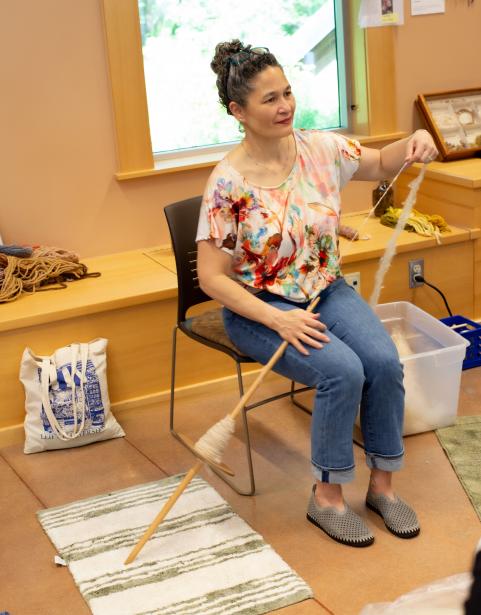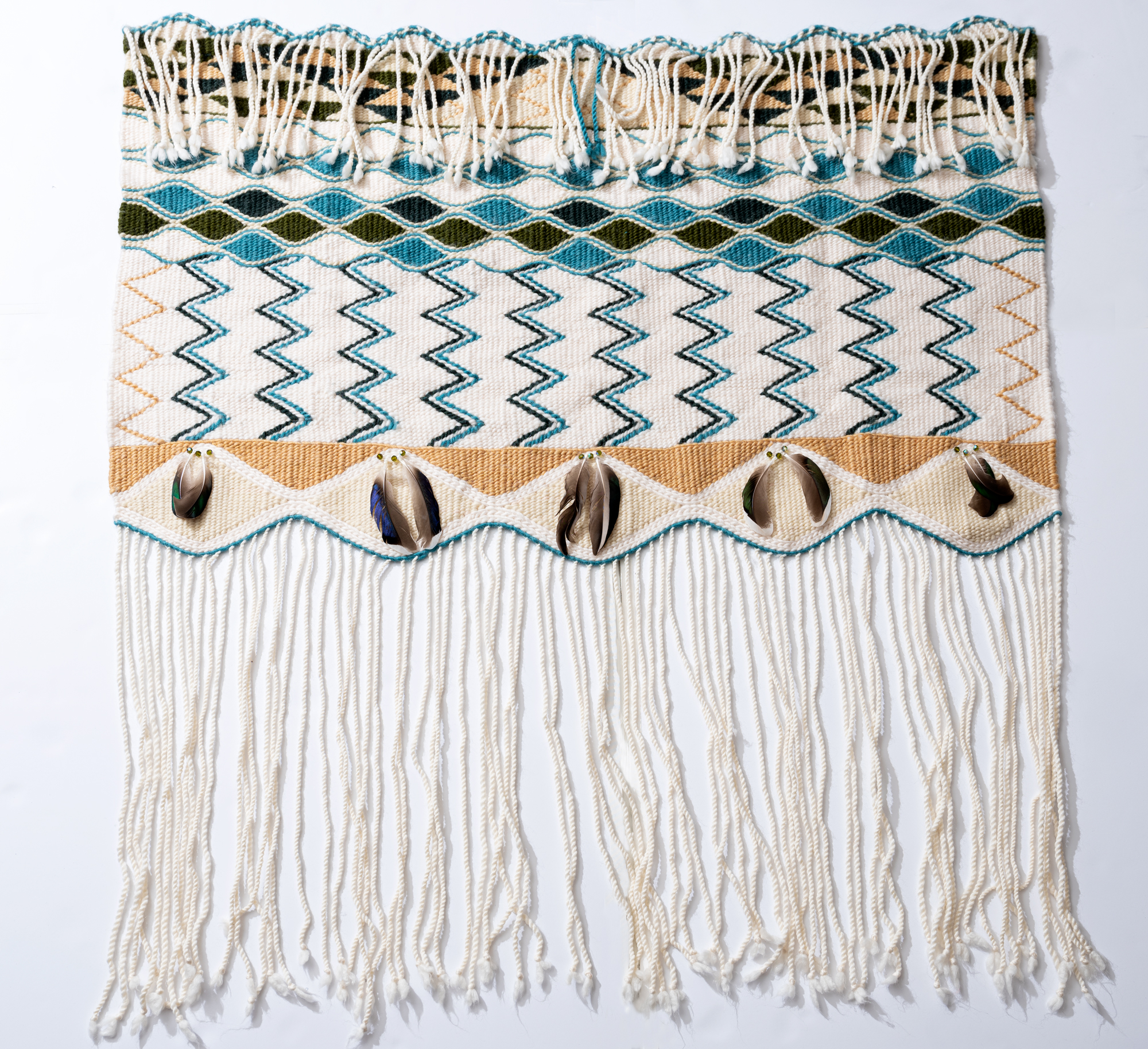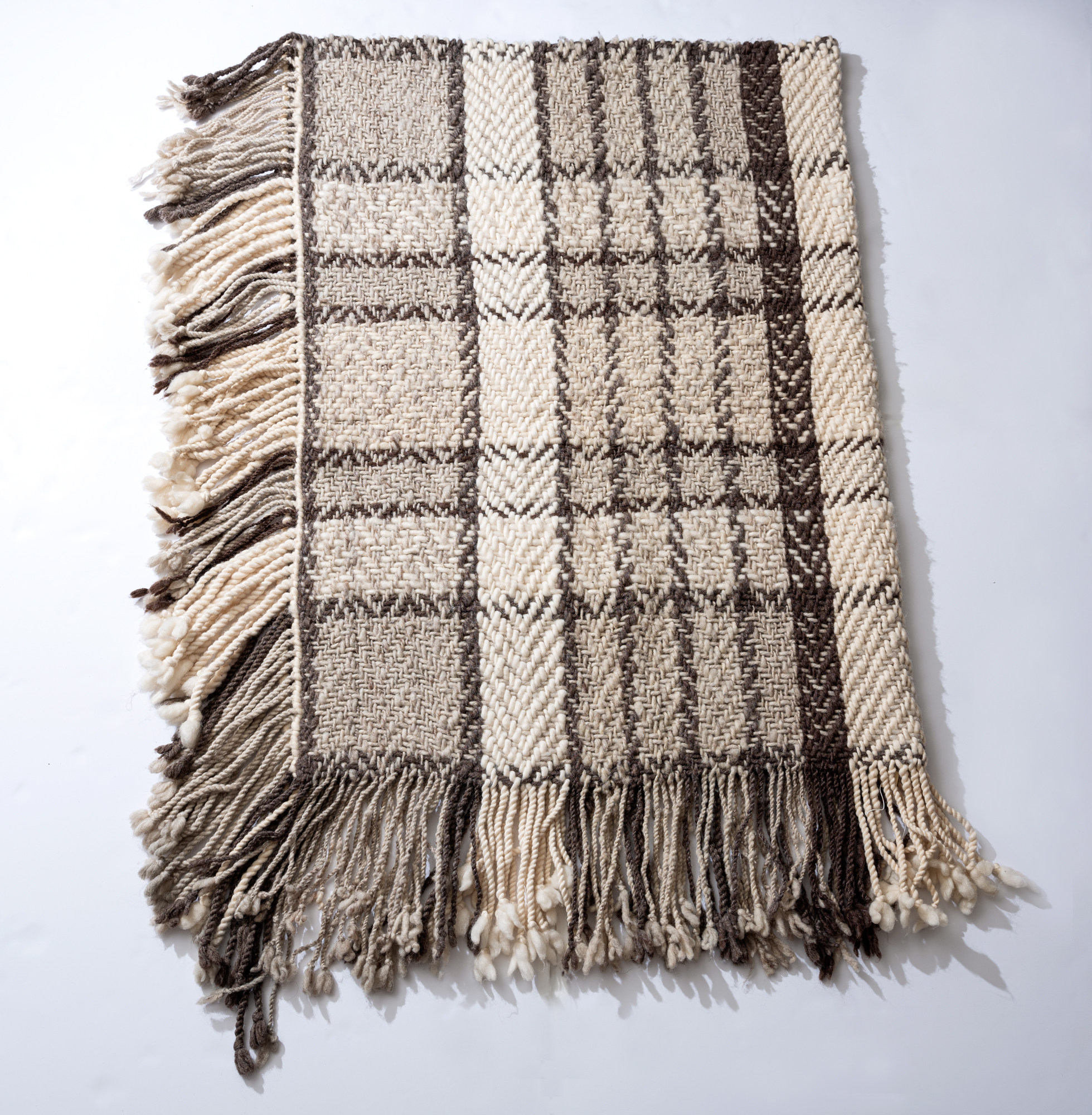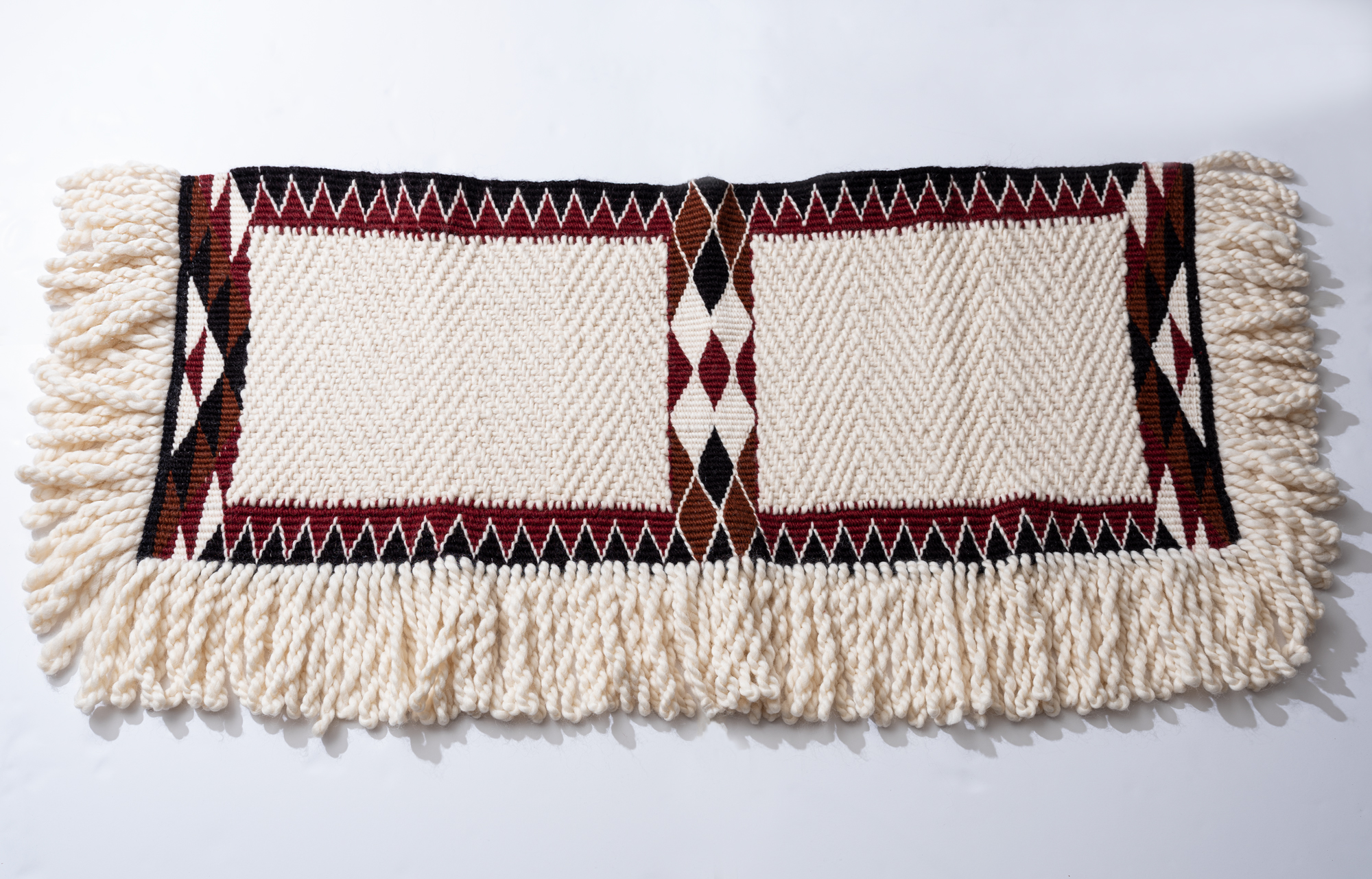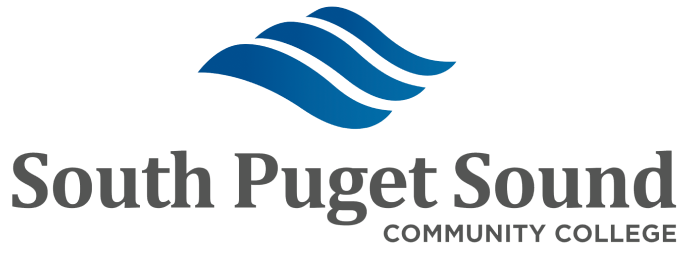saOamitCa - Dr. Susan Pavel, Filipina by birth, first learned Coast Salish wool weaving during the summer of 1996. Her master teacher was subiyay – Bruce Miller of the Skokomish Nation, Uncle to her husband CiXapqid – Michael Pavel. Each summer she would take three full months to produce one ceremonial blanket and then gift it to various elders of the tribe. By the fourth year it was suggested to sell her creations as an exchange of gifts and she started along that path. By the seventh year she was invited to teach weaving classes for other Nations and has taught hundreds of students. She has curated, participated, and solo exhibited in 12 museum exhibits and over 25 gallery exhibits. She has been awarded 17 artist-in- residence or grant opportunities. She has over 30 bibliographic acknowledgments. She has consistently taught, presented, and/or demonstrated at least 80 times. Her weavings can be seen in 10 public venues and numerous private collections across the nation. She currently serves as the Executive Director of the Coast Salish Wool Weaving Center. As well as an adjunct faculty member at The Evergreen State College. Today she continues to weave and teach, as she is obedient to sQeLsyayay – Weaver’s Spirit Power.
Excerpts from a conversation between the artist Susan Pavel and the curator on August 30th, 2022
Tell me about this blanket that you’ve titled Mary’s Blanket.
Mary is my husband’s sister; she is the baby of the family though she is older than I am. I had been weaving four years by the time Mary’s blanket came to me. My first year of weaving was gifted, actually claimed, by my master teacher, Bruce Miller (subiyay) claimed my first weaving. And I only wove one weaving every year; it was all I could do. The second year that weaving was gifted to my husband’s mother, Annie Pavel. The third year that weaving was gifted to my husband, Michael Pavel. The fourth year Mary approached me about buying one, and there was no room in my world, no conception of, “yeah, you can buy it” I did understand what that meant, “buy” it from me. I said, “no, Mary, I’ll just give it to you” that’s when she schooled me. It's a good thing she schooled me. She sat me down, and she said look, “you are becoming a very good weaver; that’s your gift. “My gift (Mary’s gift) is making money. That is her wealth power, and Susan, your wealth power is weaving.” In our way of thinking, everybody has a wealth power. Everybody has something that they are gifted at that they are good at. They can hang their hat on, so to speak, every single one of us. At the time, she recognized that that was becoming something I was becoming very good at. She explained to me that she wants to exchange ‘gifts’ because her gift is making money, and my gift is weaving, so we are exchanging our ‘gifts’.
That fits so well, and it opened my world that, yes, everyone is gifted, and yes, if this is an equal exchange of gifts from the creator, then this is how it works. It is how it works. No one can do it all, and nor should anyone do it all. We should all be very gifted, and what we do and exchange and that is how community is built how relationships are made. That is how we hold each other up. It's a good thing to trade our ‘gifts’ with each other.
Tell me about this small vest.
This child’s vest. It's a child's size because I wanted to finish it quickly. Let me be honest about that. (laughter) it's small because I was trying to perfect, or at very least get, a technique down. So, this child’s vest is, I guess it would be a granddaughter vest to the grandmother vest. Grandmother vest is an ancestral weaving that lives at the Field Museum and has been there since 1893 when Myron Eels took back a collection of items from Skokomish, over 200 some items. And of those 200 items, there are less than 10 wool weavings that got taken back, and one of them is what we affectionately, a name that was revealed to us as grandmother vest. When we visited her in visited her in 2001, there were no cell phone cameras, just 35 mm and sketch pads. So, I took a picture, I did the drawings, I come home, and I developed the film. Mind you, I had seen lots of beautiful amazing pieces, but Grandmother vest kept tapping me on the shoulder. My master teacher, Bruce Miller (subiyay), was still alive at the time. After about two weeks, three weeks of waking up thinking about her. Thinking about her when I was awake. I finally went to uncle (subiyay), and I said to uncle, “Uncle, what’s going on here? Why do I keep getting tapped on the shoulder?” He said, “do you really not know?” I said, “well, I think we’re supposed to recreate her.” He just had that look in his eye, nodded his head, and looked through me. There was that way of being that he had that was in a different time frame. It was like he was communicating with the ancestors, communicating with the future. He would go there. He would be physically present in the room, but he would also be communicating to some other entities. I was silent and waited, and he nodded his head, and I said, “okay.” We went about trying to recreate. As it goes, when you are trying to figure something out you make something that doesn’t quite look anything like the thing you are trying to recreate. We definitely had our misshapen items. But the real piece of this was the neck opening. The neck opening of Grandmother Vest at the Field Museum is not cut open. It is woven with that opening in place. It was that that stopped me. It was extraordinary. How did they weave this with the opening in place and not cut open? That really challenged us. It was a really good challenge for us. So, we figured it out, and we made a way. We taught hundreds of people. We couldn’t teach fast enough. Ya, know we actually borrowed Grandmother Vest back one-year, early 2000’s and had an exhibit at the Washington State History Museum. Grandmother Vest had her own case at the front, and all behind her was all of her children. We had borrowed twenty some vests and tunics from people who were inspired by her and had woven theirs. There was this wall of her children behind her. We had a short synopsis about Grandmother Vest, and it was a lovely homage to pay to her.
The story doesn’t end there. That was in 2001 that we first saw her and visited with her. The other thing too is that she lives in a drawer in a basement with thousands of other drawers, and even my speaking of it makes me a little bit sad because she doesn’t get to visit with anybody, she doesn’t get to breathe fresh air, and it hurts my heart a little bit. I reached out to her and said, “we’re coming, we’re coming to visit you” we went back in 2018 and brought my dear friend Tili Jones with me and we re-visited the entire collection, and I say entire collection like there is a lot to look at, but there is not. There are really less than 10 woven items in there. Now we had cell phone cameras, by the way. You could zoom in and look closely. That was when I discovered a whole other thing. A weaving technique on Grandmother Vest that I didn’t see in 2001 that I saw when we came home on our 2018 trip. So yet again, here she was, this one vest that was still teaching us something. What we are looking at today is that vest that I was inspired yet again something from her. It was the technique up the side. With most of our vests, we have fringe that sits up the side of the vest, and this one doesn’t. It is a specific technique to not have fringe along the side, which is very reminiscing of Grandmother Vest at the Field. Still teaching us. Still Teaching us.
Tell me about this shawl.
This actually the first weaving that I ever wove for myself. 20 years. I wove it for myself with myself in mind because I was having that exhibit at Suquamish. I had my own exhibit there, and it was my wanting to celebrate 20 years of weaving. For me, that was a huge accomplishment; I hadn’t done anything consistently for 20 years. I hadn’t been married, had kids, had the same job, nothing but weaving. I claimed that as an accomplishment and something worthy to say, “yes, I did this for 20 years, and here is the culmination of it”. So, I approached the Suquamish museum, and it was a yes. I also knew that I needed something to wear. I wove duck dance in honor of that event and needing something of my own to weave and wear doing that opening.
Tell me about this Shawl.
This was my attempt at doing a couple of things that are unique. That is a twined border all the way around. I teach students to fully twill something and fully twine something, but I just about never teach a class on how to do both of these together. The weaver has to be very, very, very good. They have to know their tension because it's a tension thing. If a student wants to know, I feel like I could teach them how to do it one on one. The fringe is also difficult, and it is difficult to make it look like this.
What was the inspiration to do this piece?
I knew I needed a piece for a show. I don’t remember what show. It started out as a demonstration piece on the loom so people could see the technical difficulty. But as all weavings go, it needs to be finished. That was definitely one of the teachings of this one. You need to finish what you start. You need to finish what you start.
Tell me about this vest by subiyay.
As I was mentioning in the making of vests before, and we had to really work on, to work on it, when you’re first trying to recreate something, it doesn’t happen like you think it should happen. One of the things we have to keep working on is the neck opening. While we got the neck opening correct, it was massively too big. Uncle was eternally creative and had an eye for art, amongst many other things. So, he was just like, well, I’m going to just sew in this patch of leather here. Otherwise, the opening is too huge, and it would keep flopping back and forth, and it wouldn’t work that way, so he sewed this in. Then Uncle being Uncle, people were always gifting him things. He was gifted this badger pelt from the Midwest because we don’t really have badgers here. But as you should, you honor the gift, whatever it is, food, materials, and if you can’t use it, you gift it to someone else that can use it. Like we were talking, this exchange of ‘gifts’ thing. One of the important things I’ve learned is the beauty of that exchange. I remember him cutting it out and weaving it in there. He had a beautiful eye for stuff like that.
We were playing with natural dyes at this time. Some were known dyes to us, others we were experimenting. It was a fond memory for me where he and I would go driving, and we would see something in the field, and we would just stop, harvest that thing, and try it out and see if it would give us color. Even now, in 2022, I am still trying to figure out, “where did they get that red?” from an Indigenous plant it's not as easy as you think. I’m still trying to figure it out, even black, a dark brown you can kind of get, but not black. The other pastel colors are obtainable, but yeah, it's a great opportunity for some research on the dyes.
